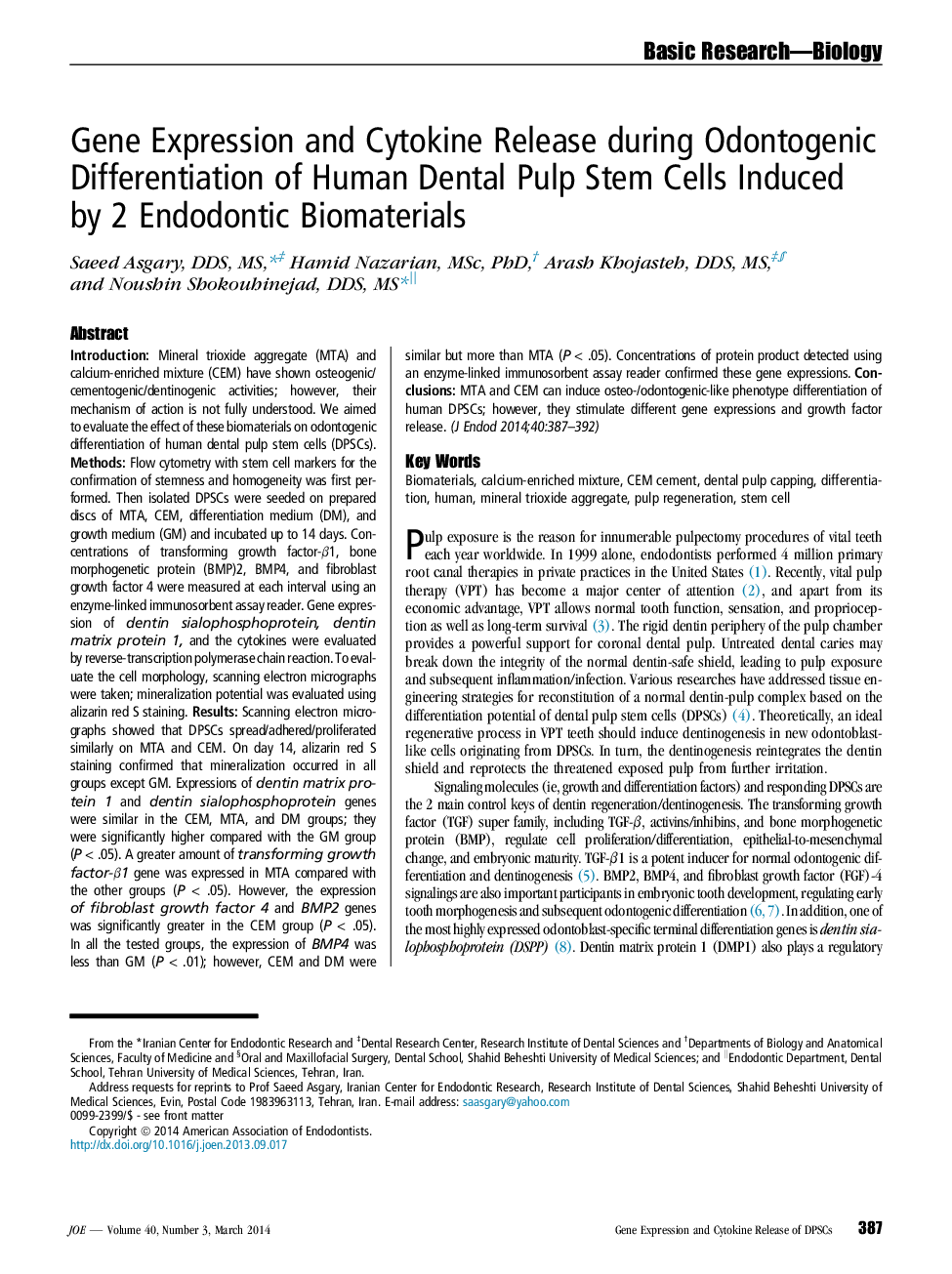| کد مقاله | کد نشریه | سال انتشار | مقاله انگلیسی | نسخه تمام متن |
|---|---|---|---|---|
| 3148571 | 1197408 | 2014 | 6 صفحه PDF | دانلود رایگان |
IntroductionMineral trioxide aggregate (MTA) and calcium-enriched mixture (CEM) have shown osteogenic/cementogenic/dentinogenic activities; however, their mechanism of action is not fully understood. We aimed to evaluate the effect of these biomaterials on odontogenic differentiation of human dental pulp stem cells (DPSCs).MethodsFlow cytometry with stem cell markers for the confirmation of stemness and homogeneity was first performed. Then isolated DPSCs were seeded on prepared discs of MTA, CEM, differentiation medium (DM), and growth medium (GM) and incubated up to 14 days. Concentrations of transforming growth factor-β1, bone morphogenetic protein (BMP)2, BMP4, and fibroblast growth factor 4 were measured at each interval using an enzyme-linked immunosorbent assay reader. Gene expression of dentin sialophosphoprotein, dentin matrix protein 1, and the cytokines were evaluated by reverse-transcription polymerase chain reaction. To evaluate the cell morphology, scanning electron micrographs were taken; mineralization potential was evaluated using alizarin red S staining.ResultsScanning electron micrographs showed that DPSCs spread/adhered/proliferated similarly on MTA and CEM. On day 14, alizarin red S staining confirmed that mineralization occurred in all groups except GM. Expressions of dentin matrix protein 1 and dentin sialophosphoprotein genes were similar in the CEM, MTA, and DM groups; they were significantly higher compared with the GM group (P < .05). A greater amount of transforming growth factor-β1 gene was expressed in MTA compared with the other groups (P < .05). However, the expression of fibroblast growth factor 4 and BMP2 genes was significantly greater in the CEM group (P < .05). In all the tested groups, the expression of BMP4 was less than GM (P < .01); however, CEM and DM were similar but more than MTA (P < .05). Concentrations of protein product detected using an enzyme-linked immunosorbent assay reader confirmed these gene expressions.ConclusionsMTA and CEM can induce osteo-/odontogenic-like phenotype differentiation of human DPSCs; however, they stimulate different gene expressions and growth factor release.
Journal: Journal of Endodontics - Volume 40, Issue 3, March 2014, Pages 387–392
